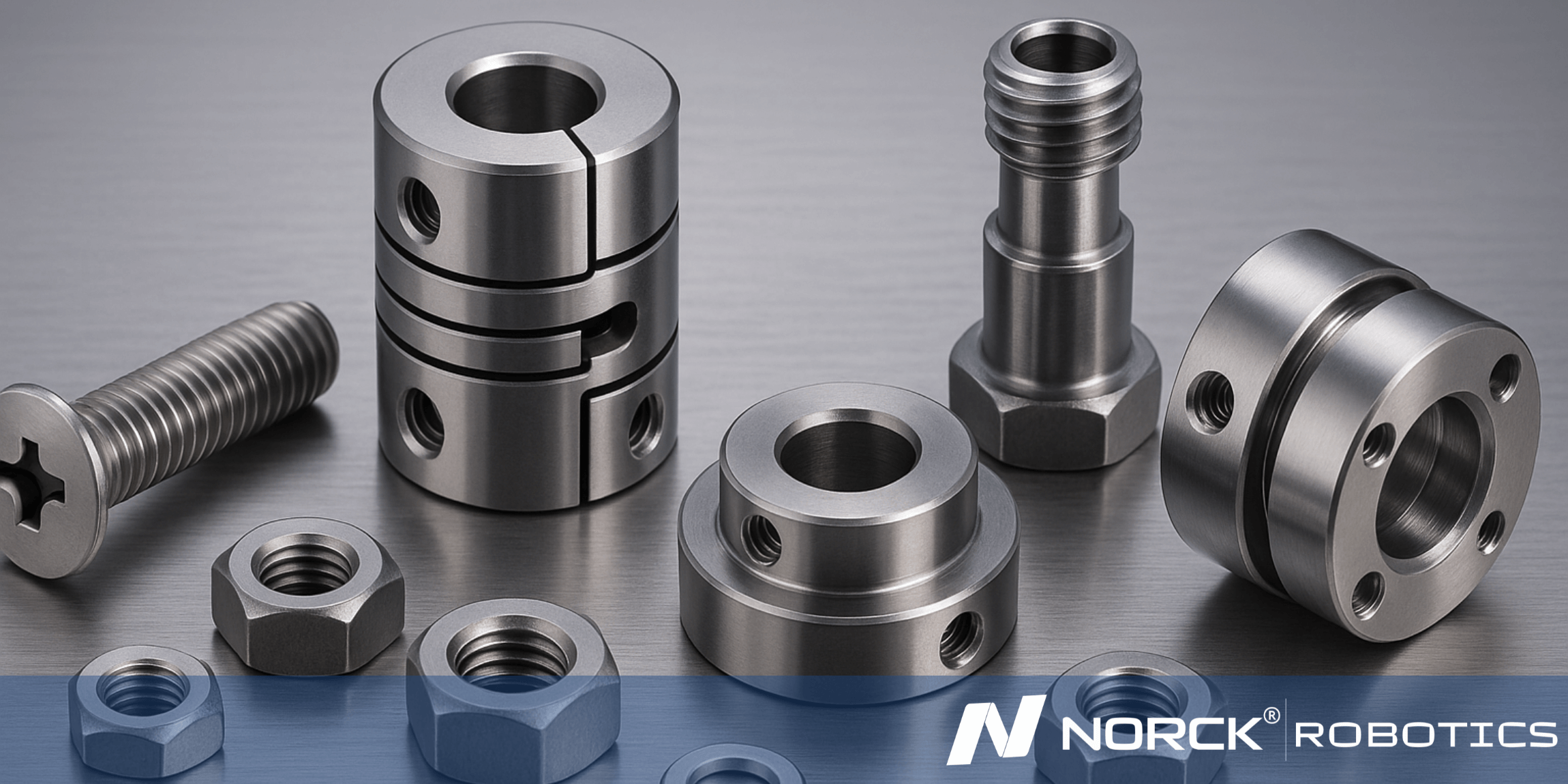

The precision fasteners & couplings play an essential role in maintaining correct joining of components within robotic structures. These are high-tolerance bolts, screws, nuts, dowel pins to ensure precise alignment, and press-fit elements to guarantee structural soundness during motion. These fasteners, secure, withstanding in time, safeguard the ultimate functioning and precision of robotic systems. The couplings have to be backlash-free in linking shaft motors to loads to reduce any play and misalignment. Flexible diaphragm and positive locking types are most often preferred in robotics for their responsiveness and stability. Norck Robotics also offered engineered solutions customized to robotic applications, including fasteners and quick-release mechanisms.
Ready to automate your future? Get a quote from Norck Robotics now!
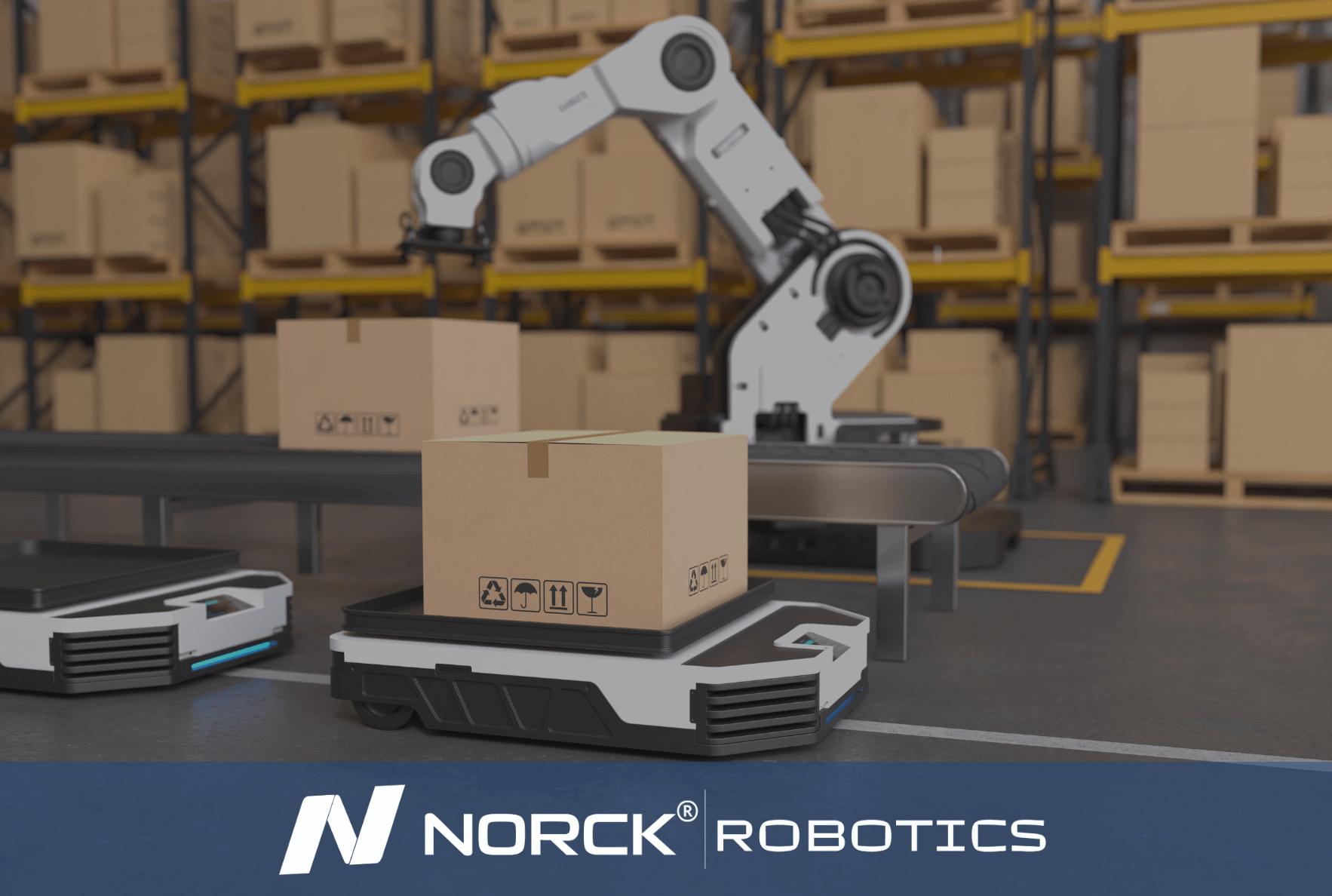
Norck Robotics specializes in providing unique robotic automation and engineering solutions designed to meet the specific operational needs of each client. Our expertise covers a wide range of industries and applications.
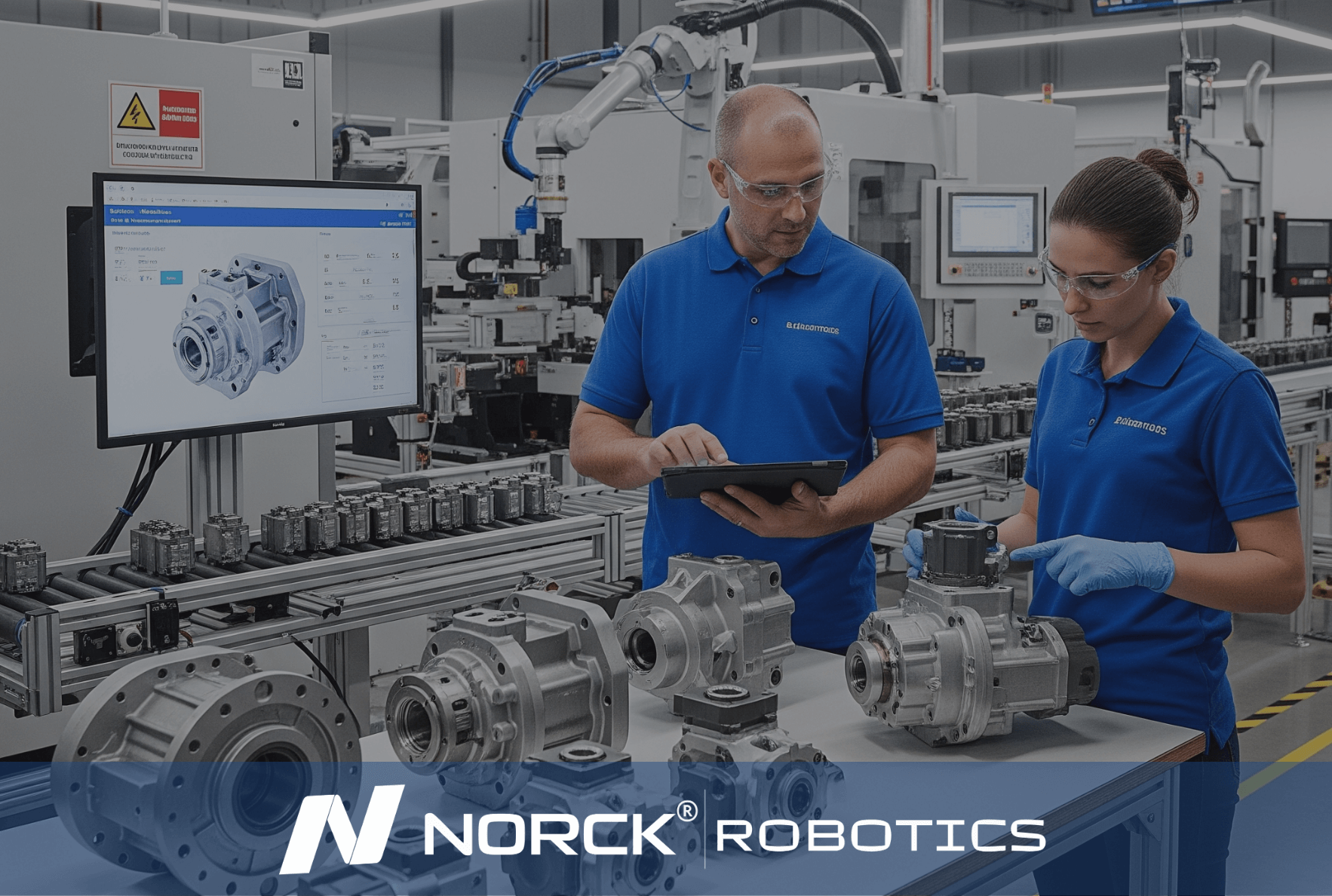
Norck Robotics delivers turnkey robotic automation and engineering solutions tailored to your specific needs across various industries.

Whether you need a single robotic cell prototype or full-scale factory automation, Norck Robotics engineers are ready to collaborate with you to bring your concept to life.

Norck Robotics engineers analyze your existing processes to provide feedback that enhances efficiency, cost-effectiveness, and productivity for robotic integration.
Fasteners or connecting hardware (bolts, screws, nuts, pins) are fundamental components for robotic assembly for all of the following reasons.
Precision Fasteners & Couplings are important because they allow for secure and accurate robotic assembly. Fasteners such as bolts, screws, nuts, and pins - dowel pins in particular - are used for high-tolerance alignment and can provide long-term structural integrity. Fasteners ensure structural rigidity under load and prevent unwanted movement.
Backlash-free couplings are the method to connect motor shafts to mechanical loads without slack or slip. Most common types are flexible diaphragm couplings and positive-locking couplings; both primarily maintain smooth transfer of torque and controlled motion; two very important factors in robotics.
Precision fasteners & couplings can be advantageous in their modularity, maintenance capabilities, and flexibility in custom configurations. In some higher performance and mission critical robotic systems, Norck specializes in providing industry standards such as custom fasteners, quick release fasteners, and application specific couplings, meant for particularly harsh conditions or specific mechanical requirements.
Properly tightened and precise fasteners are highly important in the area of robotics because they can have significant effects on the overall accuracy, repeatability, and longevity of a robot. If fasteners are misaligned, deteriorated, or placed incorrectly, there will be variations in the assembly, among other issues such as premature wear, vibration, and lower reliability of the robot system.

In addition to its own expert engineering team, Norck Robotics provides access to a network of hundreds of top-tier system integrators, robot manufacturers, and component suppliers across the United States, Germany, and Europe.

Working with Norck Robotics reduces dependency on manual labor, increases production consistency, and secures your operations against unforeseen disruptions, quality issues, and fluctuations. This enhances your company's supply chain resilience.
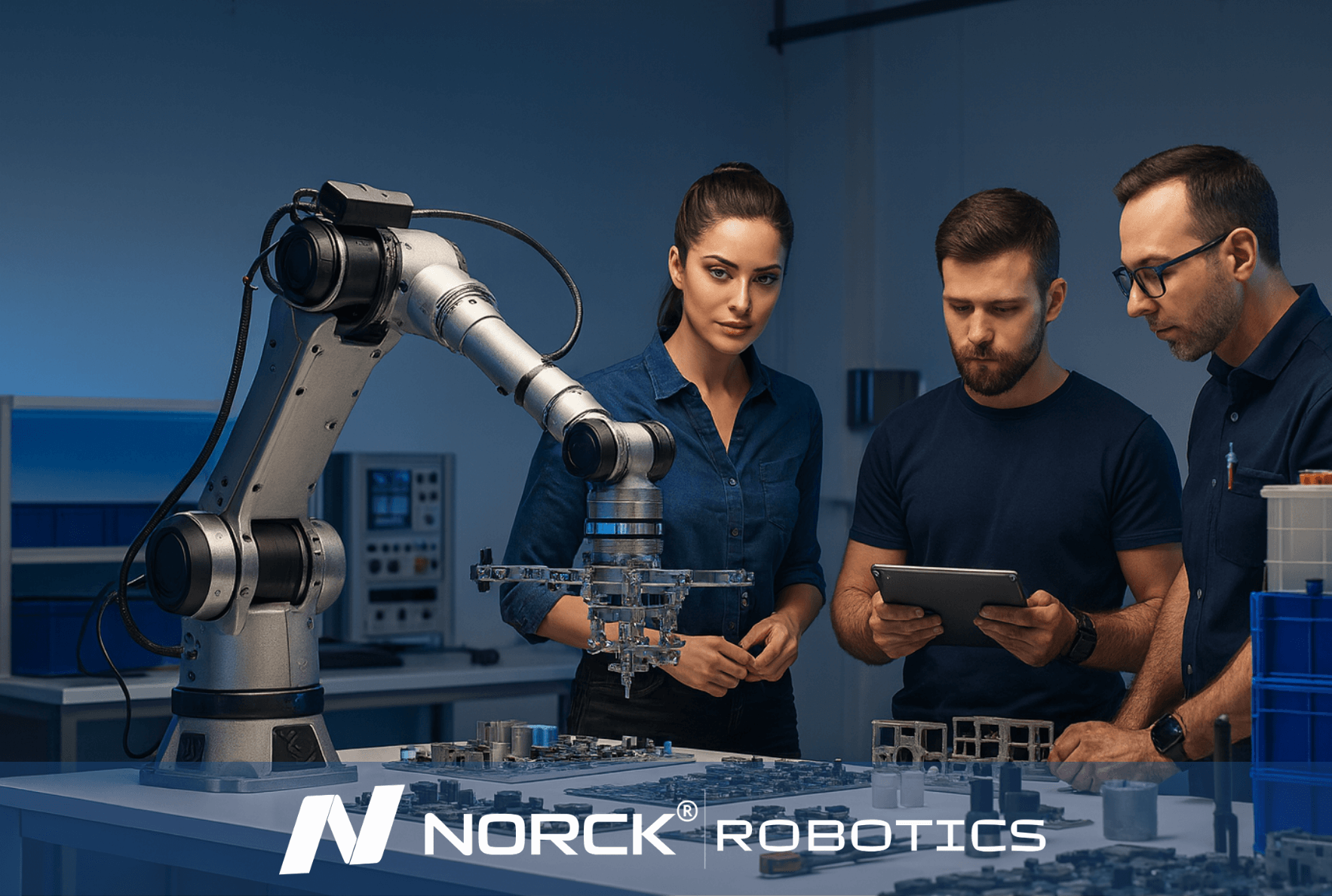
Norck Robotics advances digital automation by developing custom-designed robot grippers, advanced vision systems, and innovative simulation software. With an AI-driven, data-centric approach, it enables smarter system design, optimal performance, and predictive maintenance solutions.
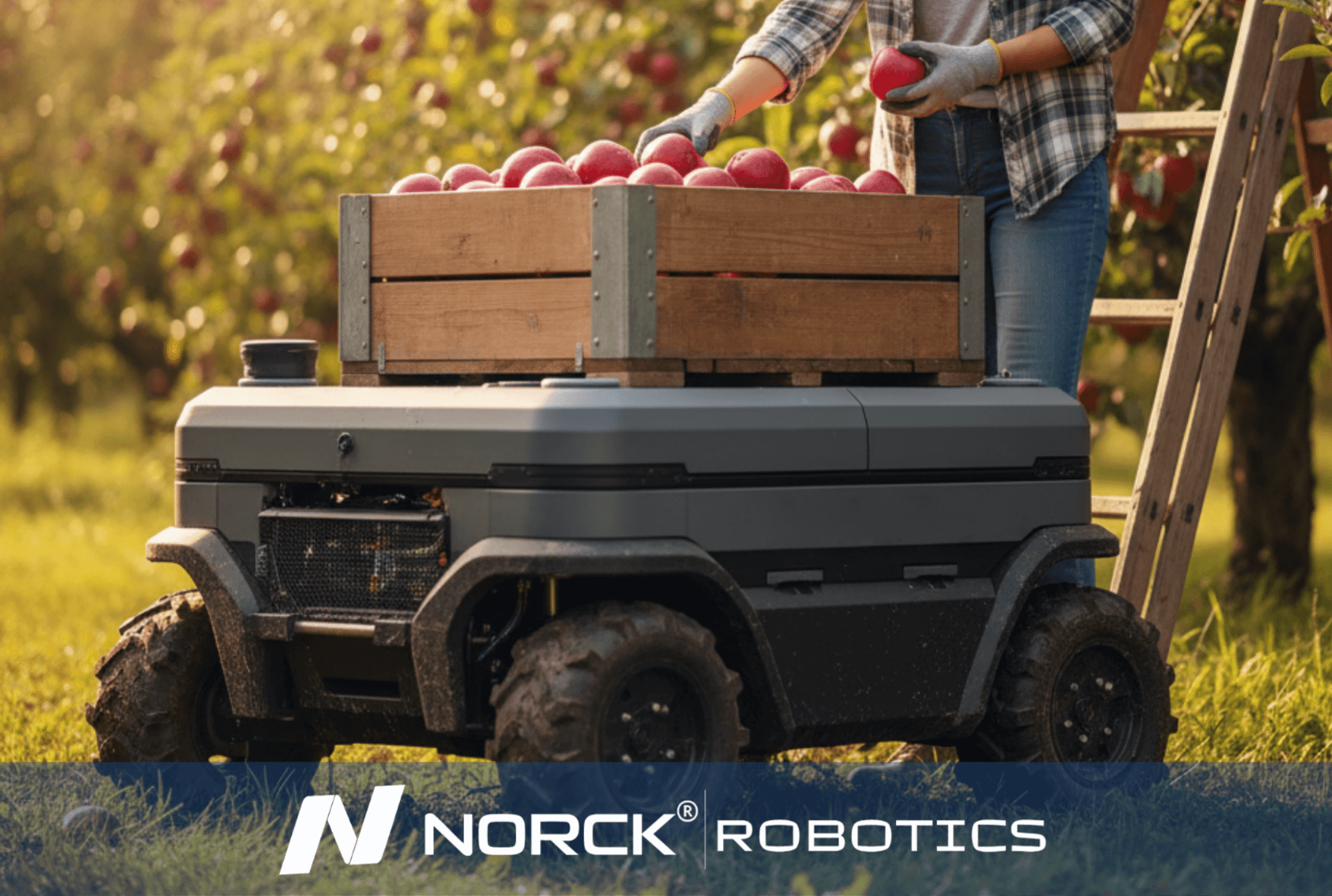
Norck Robotics encourages its partners to be carbon-neutral by reducing energy consumption and material waste through the efficiency of robotic automation, and prioritizes environmentally conscious suppliers.
Fasteners with high tolerances are important to preserving the overall precision of a robotic system. Here is why:
High tolerance fasteners, e.g., dowel pins and tightly spec’d bolts, keep parts in the orientation requested at assembly. It is critical to prevent the accumulation of errors across robotic joints and link arms and frames to ensure the proper positioning and repeatability of the system.
The common scenario in dynamic systems is that vibration and motion can lead to loosening of fasteners with low tolerances. High tolerance fasteners fit tightly enough that they do not drift and that consistent joint position and structural rigidity is maintained during periods of repeated operation.
Precision fasteners should limit force distribution across a connected component to only its likely intended use. Precision fasteners reduce the potential for mechanical stress concentration that can result in deformation, preferably, and, at the very worst, backlash and inaccuracy of the robotic system.
Many robotic subsystems utilize tolerances under a micrometer, especially either with backlash free couplings or precision assemblies. High tolerance fasteners securely maintain tolerances if needed, especially seen during realistic operational use.
Couplings are mechanical devices attached to two rotating shafts—that is, essentially between the motor shaft and the load (for example, the gearbox or actuator) - to assist them in transmitting torque and rotary motion from one to the other. In robotics, they need to be coordinated to ensure smooth, reliable, and precise motion between parts.
Here are some reasons why these couplings should be backlash-free in robotic systems:
Backlash-free couplings (flexible diaphragm or positive-locking types) must be able to never allow even the slightest delay or oddly-shaped looseness to exist between shaft rotations. This is particularly important for accurate control in applications like robotic arms, grippers, and CNC.
In robotic systems where a millimeter or sub-millimeter movement is significant, such as in medical robots or pick-and-place machines, backlash can result in very serious positional errors. Hence, zero-backlash couplings ensure that the corresponding motion will be transmitted accurately.
Backlash delays the robotic system, affecting response time and repeatability. Backlash-free coupling provides constant performance even under variable loads and motion profiles.
With the removal of internal play, these couplings minimize shock loads and vibrations, thereby increasing the life expectancy of components and smoothing operation.
All in all, backlash-free couplings are an integral part of high-performance robotic setups which demand precision, consistency, and durability.